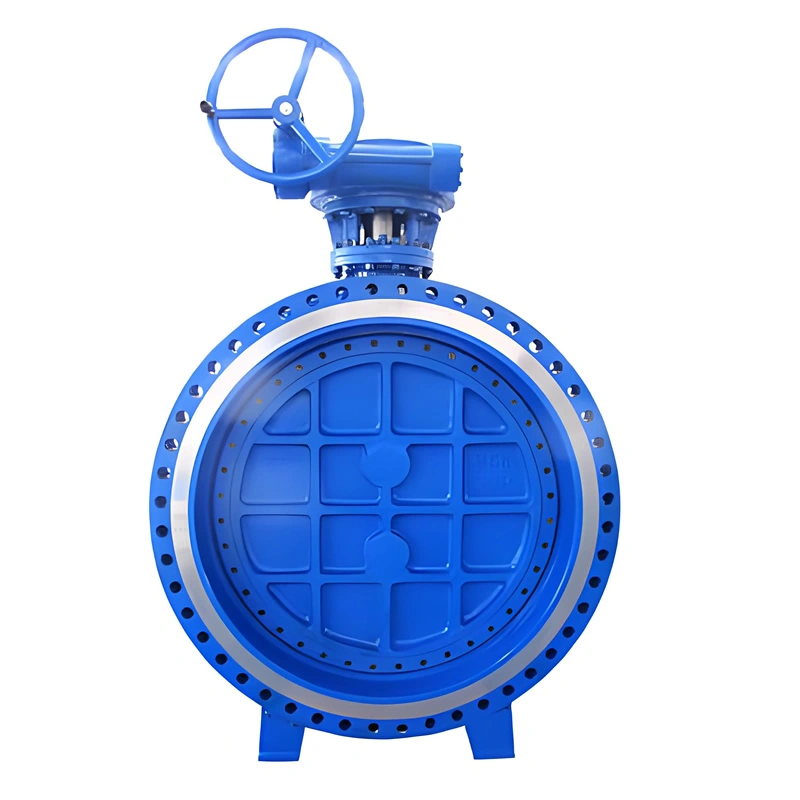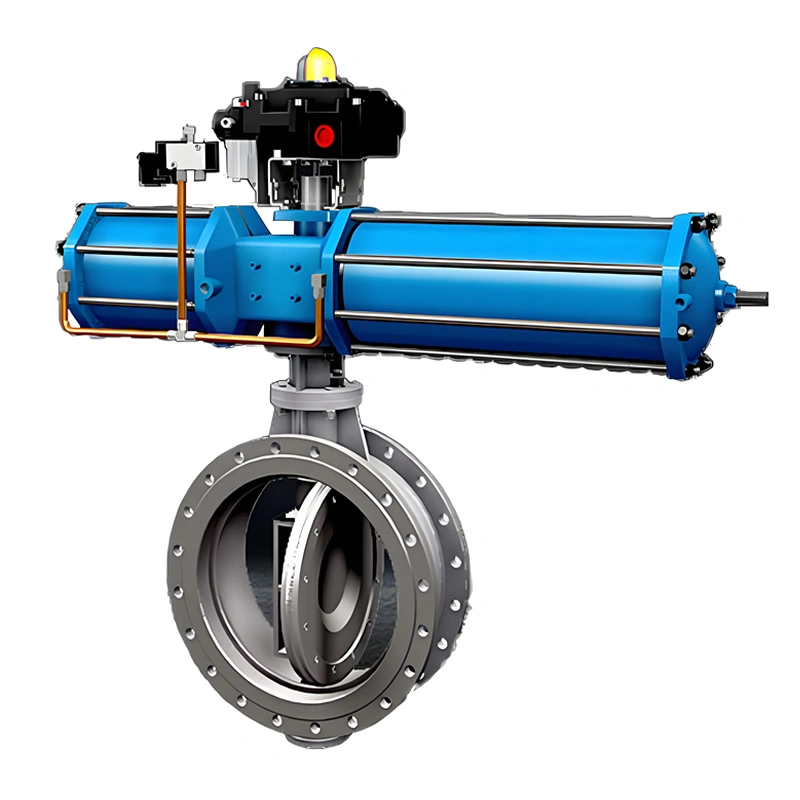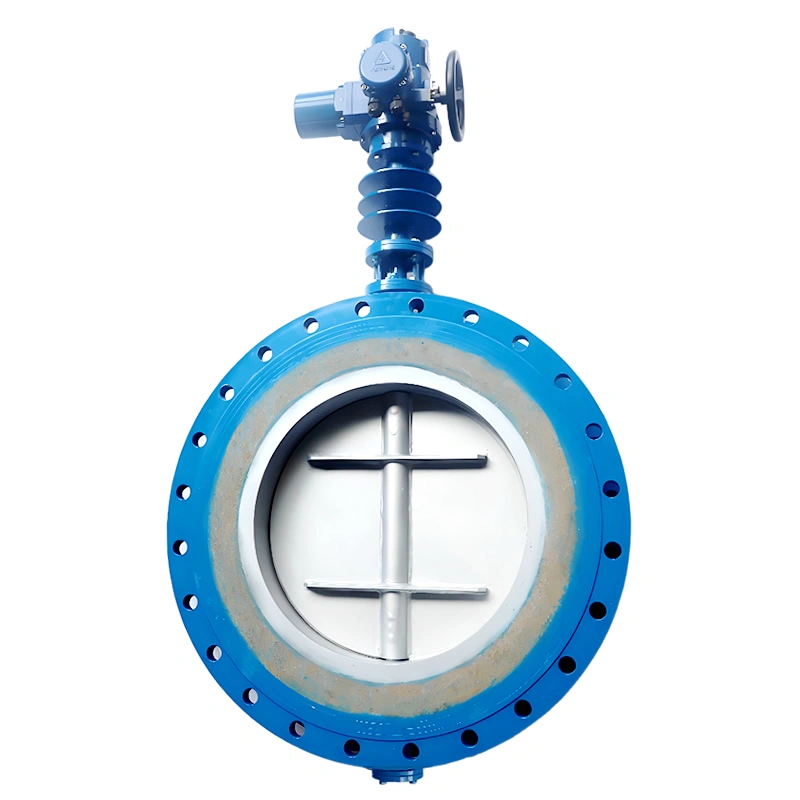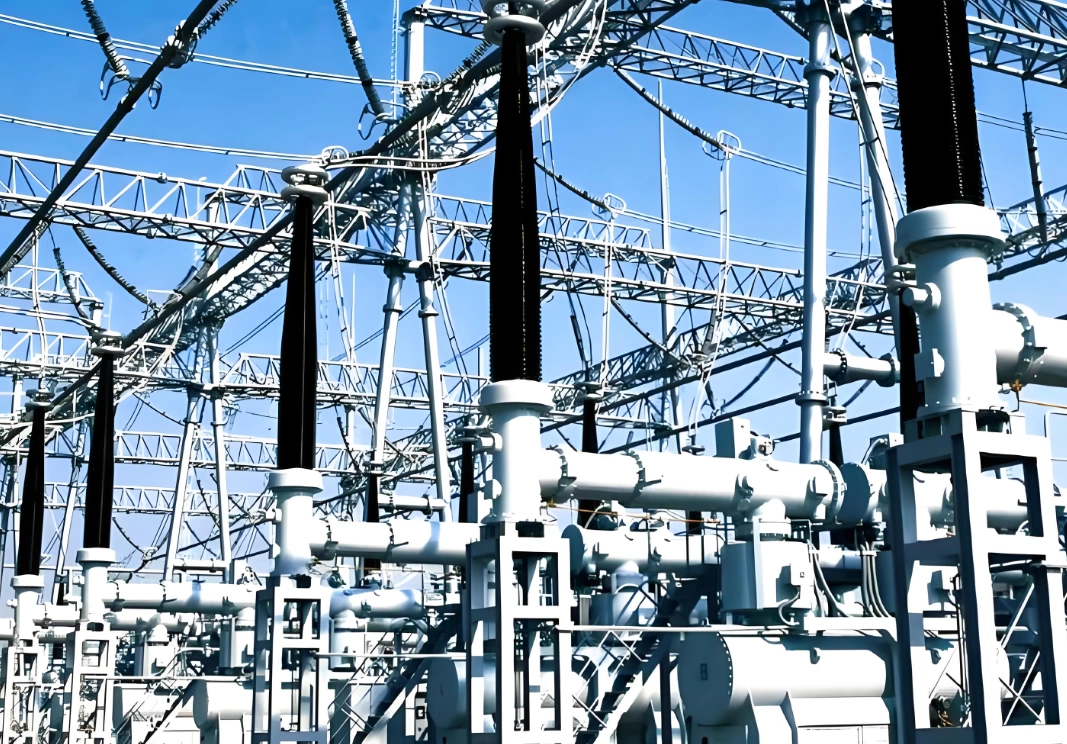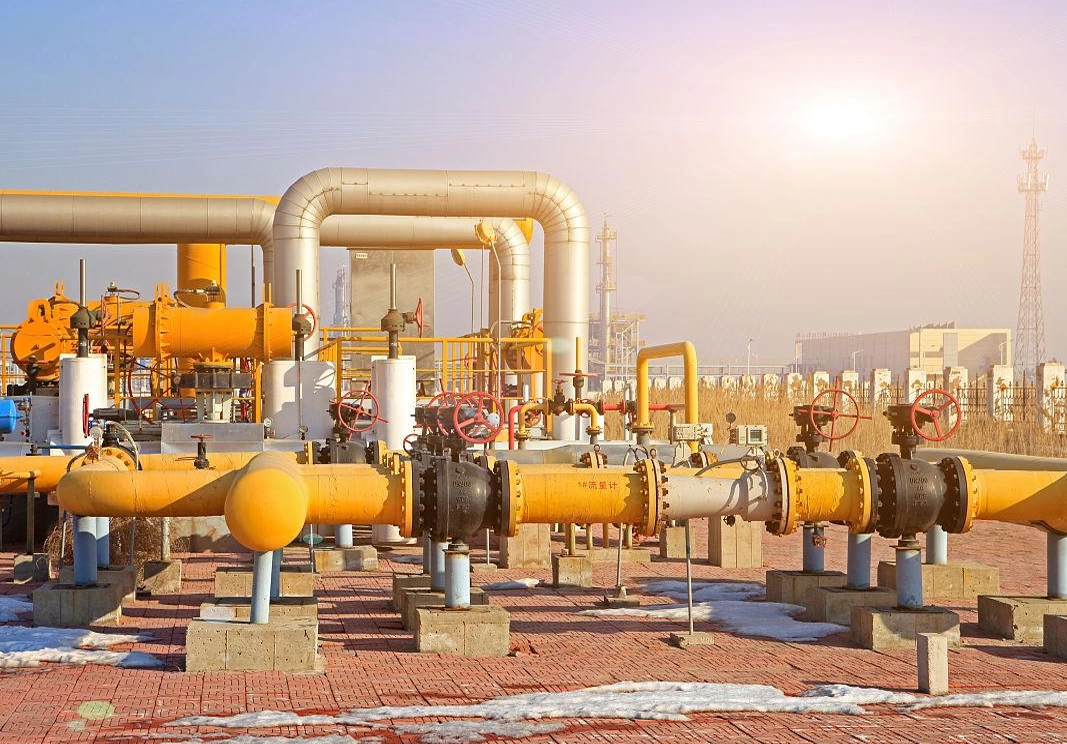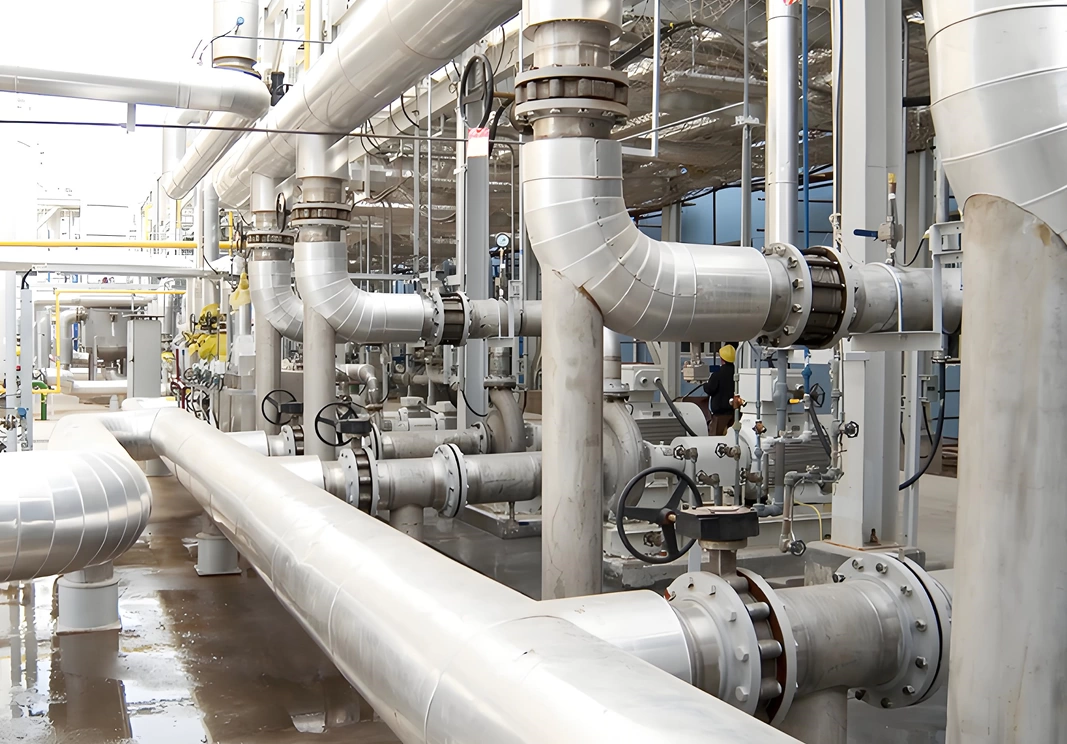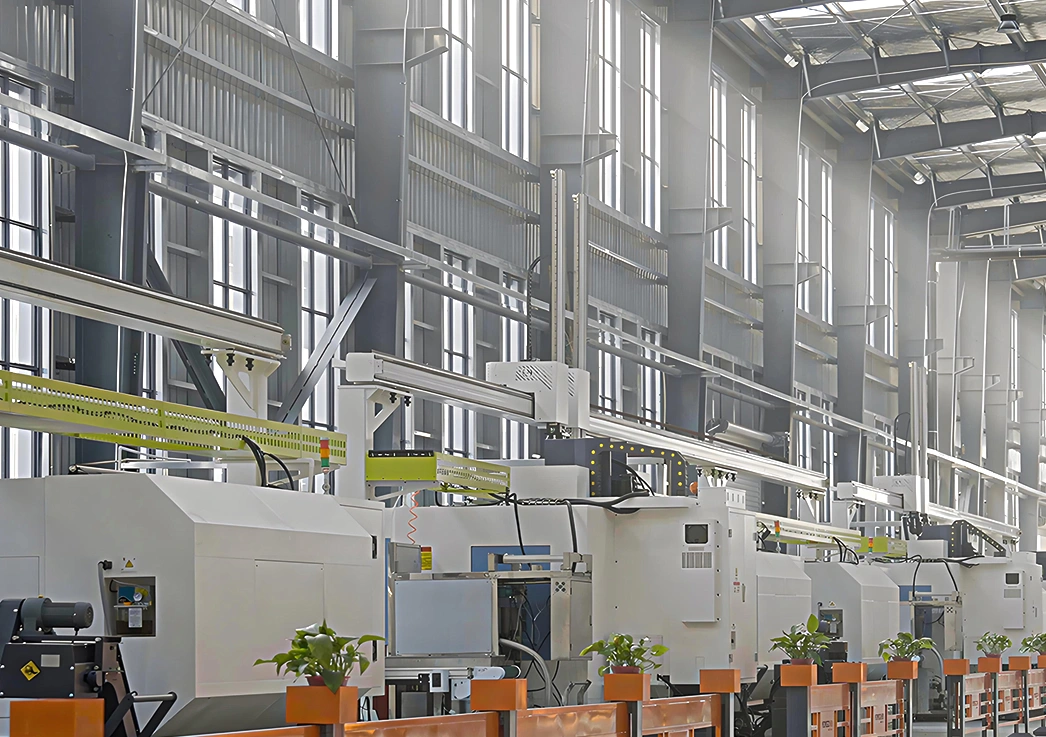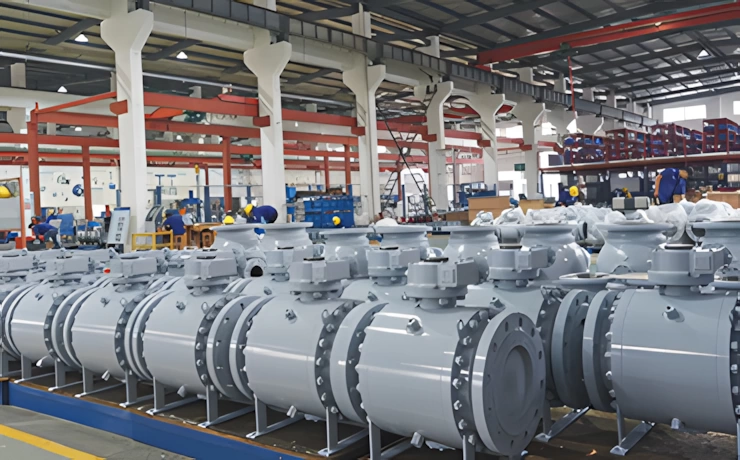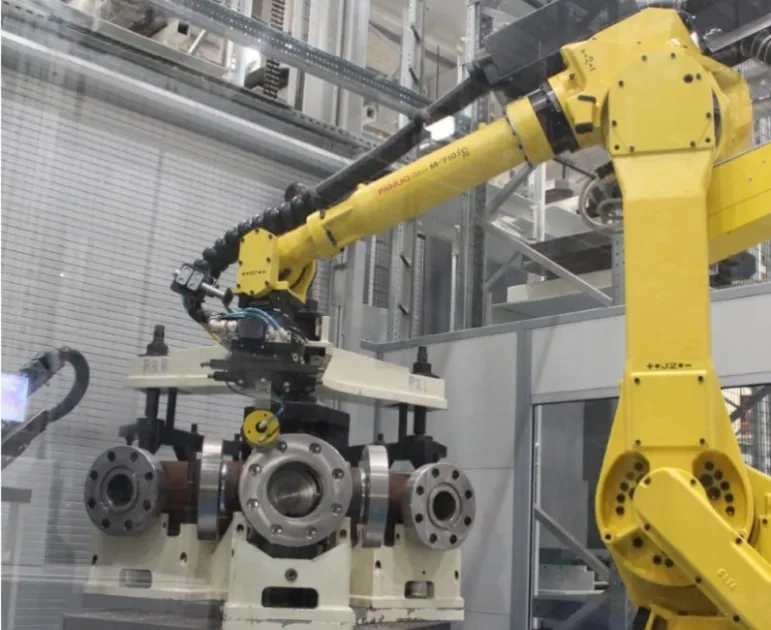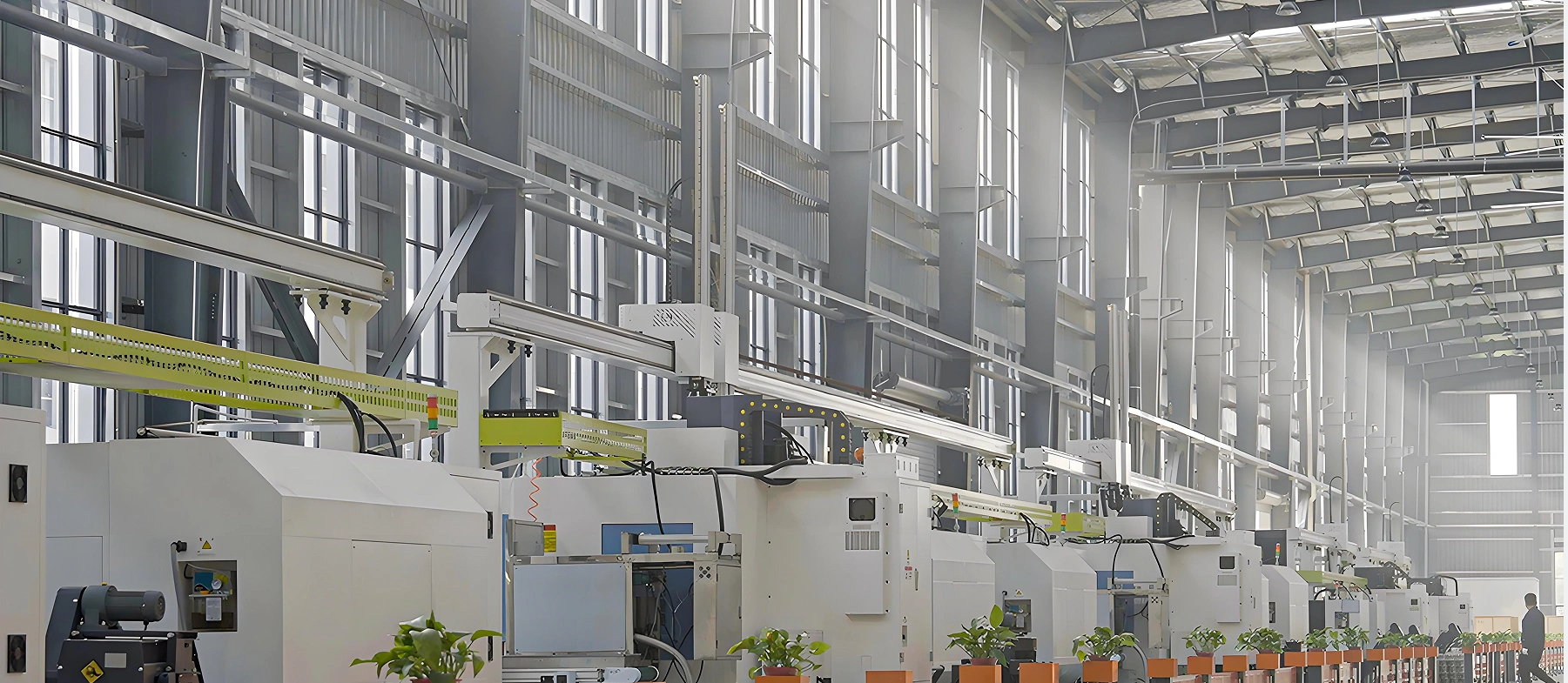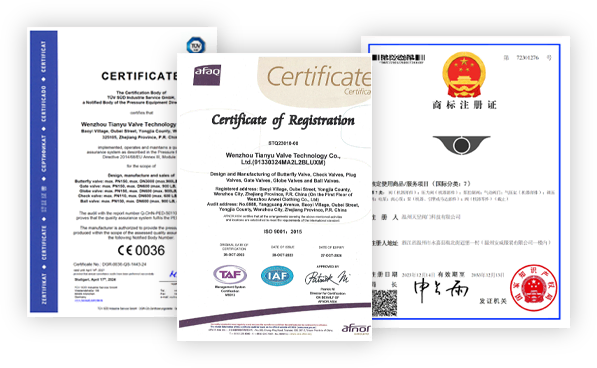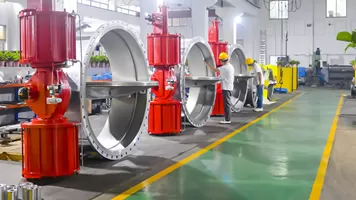The triple eccentric (offset) design is indispensable for DN1400 large-diameter valves, addressing the unique challenge of seal wear in high-flow, high-cycle applications. The disc is offset radially, axially, and angularly, creating a conical sealing surface that lifts completely away from the seat during the opening/closing stroke—eliminating rubbing contact for over 90% of the movement.
In large water treatment plants, where the valve may cycle daily to regulate flow, this design reduces seal wear by up to 90% compared to single or double eccentric alternatives. The disc only makes contact with the seat at the final moment of closure, where metal-to-metal pressure (aided by spring loading) forms a tight seal. This mechanism extends seal life to 5–8 years in heavy-duty service, drastically reducing the need for costly maintenance on large-diameter valves that require specialized equipment for access.
The Stellite 6 hard seal is tailored to the demands of DN1400 valves, providing unmatched durability in high-flow, medium-pressure environments. Unlike soft seals that degrade under the velocity and potential particulate load of large-diameter pipelines, Stellite 6 maintains its hardness and sealing integrity up to 425℃. In municipal water distribution mains, for example, the hard seal resists abrasion from suspended solids (e.g., sand, sediment) that would quickly damage soft seals, ensuring leak-tight performance for years.
The hard seal delivers ANSI/FCI Class IV leakage performance, a critical specification for large-diameter valves where even minor leakage can result in significant media loss. In a power plant’s cooling water system, this level of sealing prevents waste of thousands of gallons of water daily, supporting sustainability and cost-efficiency.
WCB carbon steel is the ideal material for DN1400 valves, balancing structural strength, weldability, and cost-effectiveness. Large-diameter valve bodies require material that can withstand the mechanical stress of high-flow media (e.g., water hammer in pipelines) and the weight of the valve itself. WCB’s tensile strength and ductility prevent brittle fracture, while its weldability allows for on-site modifications or repairs—critical for large valves that are difficult to transport and replace.
The valve body is manufactured via sand casting, optimized for large-diameter components to ensure uniform wall thickness (minimum 30mm for DN1400 CLASS 150) and eliminate internal defects. Post-casting heat treatment (normalizing) relieves internal stresses, preventing warping during operation and maintaining dimensional accuracy for proper sealing.
Manual operation of a DN1400 valve is only feasible with a worm gear operator, which reduces torque requirements by leveraging gear reduction. Without this feature, the torque needed to open/close the valve would require multiple operators or specialized equipment. The worm gear operator’s robust design (cast iron housing, precision-machined gears) ensures smooth operation even after years of use, with minimal maintenance (annual lubrication only).
For automated systems, the valve’s modular design allows integration with large-torque pneumatic or electric actuators. Pneumatic actuators are ideal for high-cycle applications (e.g., wastewater treatment plants), while electric actuators with 4–20mA control signals enable precise flow modulation in power plant cooling systems, integrating seamlessly with SCADA systems.
Flanged connections (ANSI B16.5) are essential for DN1400 valves, providing a secure, leak-tight joint that can withstand the pressure and vibration of large-diameter pipelines. The bolt-through design ensures the valve is evenly clamped between pipeline flanges, eliminating misalignment that could cause leakage. For retrofitting projects, the flanged connection ensures compatibility with existing ANSI-standard pipelines, avoiding the need for costly adapter fittings.
In municipal water mains, the flanged design simplifies installation using standard pipeline construction equipment, reducing downtime during system upgrades. The raised face (RF) flange paired with spiral-wound gaskets creates a robust seal that resists the cyclic pressure changes common in water distribution systems.
- Raw Material Verification: WCB carbon steel billets undergo rigorous testing to ensure compliance with ASTM A216. Spectral analysis confirms chemical composition (C: 0.25–0.35%, Mn: 0.60–1.00%), while ultrasonic testing (UT) detects internal defects (porosity, cracks) that could compromise structural integrity in large-diameter components.
- Hardfacing Material Testing: Stellite 6 alloy is tested for chemical composition (Co: 50–60%, Cr: 25–30%) via X-ray fluorescence (XRF) and hardness (≥58 HRC) via Rockwell testing, ensuring wear resistance meets industrial standards.
- Casting: The DN1400 valve body and disc are produced via sand casting, using precision patterns to ensure dimensional accuracy. The mold design incorporates risers to prevent shrinkage defects in thick-walled sections (e.g., flange areas). Castings are cleaned via shot blasting to remove scale and surface impurities.
- Heat Treatment: Cast components undergo normalizing (900–950℃, air-cooled) to relieve internal stresses and improve mechanical properties. This step is critical for large-diameter components, as unrelieved stress can cause warping during machining or operation.
- Machining: CNC milling and turning centers precision-machine the valve body, disc, and flange faces. The triple eccentric geometry is machined to within ±0.05mm tolerance, ensuring the disc lifts correctly from the seat. Flange faces are machined to flatness tolerance ≤0.05mm/m and surface finish Ra ≤3.2μm for proper gasket seating.
- Hardfacing Application: Stellite 6 is applied to the disc and seat sealing surfaces via plasma transfer arc (PTA) welding. The process is automated to ensure uniform layer thickness (3–5mm) and minimal heat input, preventing distortion of large-diameter components.
- Finishing: Hardfaced surfaces are precision-ground and lapped to achieve a surface finish of Ra ≤0.8μm, ensuring uniform contact between the disc and seat. This step is verified via blueing (contact pattern testing) to confirm ≥95% seal contact.
- Component Assembly: The disc, stem, worm gear operator, and sealing components are assembled in a dedicated large-diameter valve assembly area. The stem is aligned to ensure axial runout ≤0.05mm, preventing binding during operation. The worm gear is lubricated with high-temperature grease to reduce friction.
- Hydrostatic Testing: The valve undergoes shell testing at 1.5× CLASS 150 rated pressure (3.0MPa) and seat testing at 1.1× rated pressure (2.2MPa), with a 30-minute hold time for each test. No leakage, sweating, or deformation is allowed. Testing is documented via pressure gauges and visual inspection.
- Operational Testing: The valve is cycled 100 times to verify smooth operation and torque consistency. The worm gear operator is tested to ensure it can fully open/close the valve within 50–60 turns, a practical limit for manual operation.
- Non-Destructive Testing (NDT): Critical welds (e.g., body-bonnet joints) undergo magnetic particle testing (MPI) to detect surface cracks. Large cast sections are inspected via ultrasonic testing (UT) to confirm internal integrity.
- Visual Inspection: The valve is inspected for surface defects, proper marking (size, pressure rating, material, serial number), and compliance with ASME B16.34.
- Documentation: Each valve is accompanied by a Material Test Report (MTR) for WCB steel, hydrostatic test report, and compliance certificates (API 609, ISO 9001).


